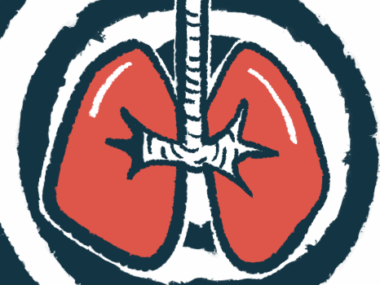IL-1 Receptor Inhibition a Potential Strategy to Block Mucus Build-up in Early CF, Study Suggests
Written by |

Inhibition of the interleukin-1 receptor — to block thick mucus production and inflammation — is a potential strategy to treat cystic fibrosis (CF) in the early stages of the disease before harmful chronic bacterial infections, a study suggests.
The study, “IL-1β dominates the promucin secretory cytokine profile in cystic fibrosis,” was published in The Journal of Clinical Investigation.
CF is caused by mutations in the CFTR gene that prevent cells from managing their water and salt balance. This imbalance triggers an accumulation of thick mucus in organs, including the lungs, resulting in inflammation and repeated bacterial infections.
Bacterial infections were thought to be an early driver of CF disease, but mucus build-up and inflammation of the airways is present early in CF children, despite little or no signs of infection.
The early build-up of thick mucus and inflammation may be the initial trigger of lung disease in CF patients, and that’s why early treatment with anti-inflammatory therapies may delay the onset of lung disease and potentially improve life expectancy.
The molecular triggers of this early mucus build-up are not well understood. Previous studies have shown that, in the absence of bacterial infection, the lung secretions from CF children contain mucus flakes consisting of two mucin proteins, MUC5B and MUC5AC. Mucins are a group of proteins that lubricate the airways, creating a protective barrier.
Increased levels of two pro-inflammatory signaling proteins (cytokines), called interleukin-1-alpha (IL-1α) and interleukin-1-beta (IL-1β), also were identified. However, the exact underlying mechanism of this process remains unresolved.
To bridge this knowledge gap, researchers investigated the molecular details of the connection between MUC5B and MUC5AC production, and IL-1α and IL-1β.
Based on experiments showing how CF airway secretions can stimulate abnormally high mucin production, researchers first showed that both IL-1α and IL-1β from these secretions were the primary signaling proteins that caused an increase in the messenger RNA (mRNA) levels of both MUC5B and MUC5AC.
Messenger RNA (mRNA) is the messenger molecule that translates the information from genes into a form that cells can “read” to produce a protein. Higher levels of mRNA are typically associated with higher levels of protein.
The team also showed that IL-1β had higher concentration in CF secretions compared with IL-1α.
The role of IL-1α and IL-1β in mucin production was confirmed by deleting the interleukin-1 receptor (IL-1R1), which caused a decrease in the levels of MUC5B and MUC5AC mRNA.
Exposing human bronchial epithelial (HBE) cells (cells on the surface of bronchi) to IL-1α and IL-1β induced MUC5B and MUC5AC protein secretion. Chronic exposure to IL-1β, in particular, led to MUC5B mucin production, and an increase in mucus on the cell surface.
Researchers then showed how increased MUC5B and MUC5AC mRNA levels, and mucin protein secretion, also occurred in mice following exposure to IL-1α and IL-1β.
The exact signaling pathway connecting IL-1α and IL-1β to mucin production was then identified. Two proteins were found to upregulate mucin gene expression following IL-1 exposure: the sterile α motif–pointed domain-containing ETS transcription factor (SPDEF), and downstream endoplasmic reticulum to nucleus signaling 2 (ERN2).
Then, in tissue taken from CF lungs, increased levels of IL-1β, SPDEF, and ERN2 mRNA were found to be associated with increased MUC5B and MUC5AC production.
Finally, researchers showed how the administration of a protein that blocked the IL-1R1, an interleukin-1 receptor agonist, inhibited CF secretion-induced gene expression of MUC5B, MUC5AC, and SPDEF.
The results from this study are consistent with the hypothesis that thick mucus secretions — characteristic of CF lungs — trigger the release of IL-1α and IL-1β. This can lead to even more mucus production (positive feedback cycle) that eventually causes scarring and loss of lung function, even without an infection present.
Blocking this feedback by IL-1R1 inhibition early on may help prevent excessive mucus build-up, inflammation, infection, and further lung damage.
“IL-1α and IL-1β trigger these responses to produce positive feedback cycles that maintain or worsen the CF airway mucoinflammatory state,” the researchers wrote.
“Targeting this pathway therapeutically [meaning inhibiting IL-1R1] may ameliorate mucus obstruction and inflammation-induced structural damage in young CF children,” the team concluded.






